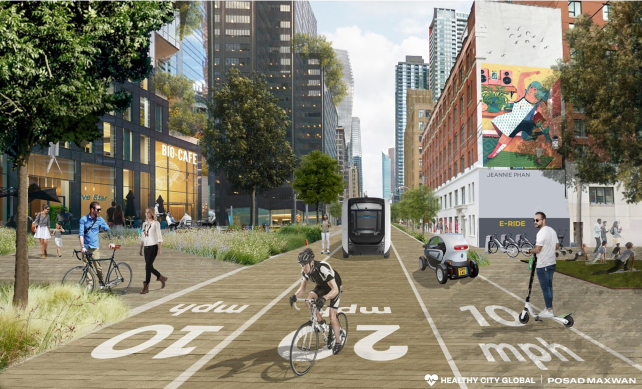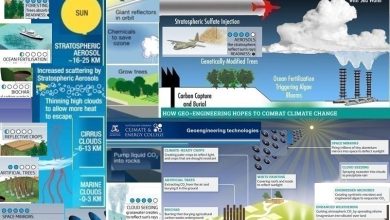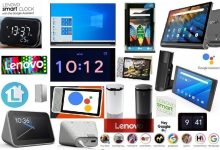

Marianne is an architect, futurist, and healthy city design expert. She has over 10 years of experience in climate mitigation and sustainable city design in Europe and North-America. After an interesting career as a structural engineer, renewable energy consultant, and futurist, she returned to her first love of city design.As a co-founder and managing partner at Healthy City Global, she is currently transforming cities around the globe into healthy environments and communities.Marianne is an experienced and inspiring speaker. She’s talked to everyone from small intimate groups to 1000+ audiences.
The future of full-scale smart mobility is slowly becoming a reality. The roll out of 5G networks have the potential to change the reality of people’s everyday lives. But this technology hasn’t arrived on a large-scale yet. This makes it the perfect time to ask ourselves some serious questions on how 5G networks might reshape our mobility and impact wellbeing and the places we live. As a society—both local and global—we are faced with two options: business as usual with a high tech flavor (drones, AV’s, …) or do we deliberately design for a positive impact and grab the opportunity to rethink how we move and what our streets and cities will look like (MaaS, healthy streetscapes, … )?
Getting around in a 5G world
One of the most common use cases of 5G is the optimization of commuter times on public transit or by car. The Chinese tech giant, Alibaba, has started using its City Brain technology technology in Hangzhou to try and solve the city’s congestion problem. The platform uses AI to process video footage from traffic cameras and GPS data from cars and busses to steer 1,000 traffic signs in real-time. After two years of experimenting, City Brain seems to be working; the amount of traffic congestion has significantly dropped in Hangzhou.
There is unfortunately a catch 22 about solving congestion problems. If you’re successful and ultimately make driving easier and more desirable again, more people will be attracted to driving their cars. This in turn leads to an increase in traffic, air pollution, and time we spend sitting and being inactive. Meaning in the end, we’ve gained nothing.
The same goes for another application of 5G: autonomous driving. 5G enables the kind of automated driving that would let us watch a movie, play a game, work, or even sleep in our car without interruption. The switch from our old privately owned cars to new electrical autonomous ones will likely bring with it a few advantages. It would lower air pollution—although the pollution due to wear and tear of brakes, tires, and roads will remain. Importantly, it would also allow cars to drive closer together, saving space on the road. But will we waste this gain by just filling this space with more cars? Or can we prevent this by designing for a different use that might actually improve people’s quality of life?

The reality of life in 5G
If smart mobility is simply applied to our current infrastructure, there is a pretty good chance it will increase traffic and air pollution causing a range of negative impacts on our health—rather than deliver the utopia some are promising. However, if we look at the potential of designing a new, fully connected system that includes all modes of transport, old and new, there is a huge potential for 5G and smart mobility to radically improve our quality of life and alter the way we get around.
Imagine this… it is a grey October day in 2025.
As I’m getting ready to leave for work, I check my Mobility-as-a-Service app (MaaS ) for the best options. It tells me that it will likely start raining in about 15 minutes, so best not to bike to the station today. Instead I choose one of the new small-scale public transit pods like Olli or Next . Great, if I order now I can still make the 7.45am train into the city. And it looks like the weather will have cleared by the time I get to the city so a bike will do for that last mile to the office. Because of a 9am client meeting I know I have no time to change when I arrive at work, so an e-bike it is then. Select, select, and go! Three minutes later, the Olli pod pulls up at the pick-up point on my corner. Everything is paid for through my MaaS app. I’m also notified about which train to take and given the code to unlock an e-bike when I get to the city. Years ago, the default would have been to hop in my car and probably get stuck in traffic for an hour or so in this rainy weather, potentially miss my meeting and have my entire day thrown off. Now I know I will still make it to work nice and dry in exactly 40 minutes.
This scenario isn’t science fiction. MaaS, 5G, and so many other innovative technologies have created the opportunity to completely rethink our mobility system and our streets today. Cars will still play a role in this new system, but it is far more likely that it will be in a rideshare capacity—rather than each of us owning our own. Toyota and Volkswagen are already experimenting with different tailored solutions that shift the focus from selling cars to selling mobility as an experience. To really redesign this experience, we will need a good understanding of everything that is at play. One of the pioneers in this space is the city of Utrecht, which has already started mapping out their mobility ecosystem in order to rethink the whole experience.
Applying our minds to the true potential of these technologies will give us the opportunity to design a digital and physical system where each mode of transport and each lifestyle has a role to play and there is adequate space for everyone. How we achieve this could be through many different initiatives like organizing road lanes by speed rather than by mode of transport. Or by lining our streets with active frontages – instead of blind facades – to make the journey more interesting and ultimately, make it feel shorter.
Right now our mobility system doesn’t reflect how the world is changing. The experience of daily travel, no matter the mode of transit, matters and should be made as pleasant as possible. A shift in our perception of mobility and the systems around it at this scale would actually mean less traffic jams—as you can move more people through a street with a combination of transport modes than just by car. It would also mean lower air pollution; more active lifestyles; and an opportunity to walk, work, and live along streets that are greener and safer for everyone. So what would you choose: business as usual with a high-tech flavour or redesigning mobility for positive impact?











